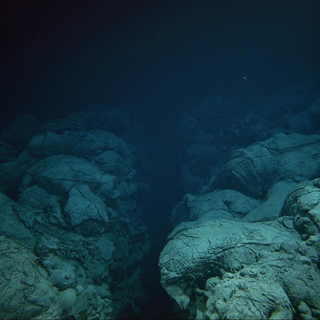Astronomers have witnessed the beginning of the end of a galaxy as it happened, for the first time ever.
Galaxies begin to ‘die’ when they stop forming stars, which is something astronomers had always known but had never clearly glimpsed the start of. Until now.
Using the Atacama Large Millimeter/submillimeter Array (ALMA), whose global collaboration is the largest ground-based astronomical project in existence, astronomers observed a faraway galaxy as it ejected nearly half of its star-forming gas and fuel — a ‘starburst’ that kicks off galaxy death. Until now, most astronomers have hypothesized this happens as a result of winds that erupt when stars form and the black holes that sit at the center of the galaxy. But the new observations suggest a different catalyst for the galaxy’s death.
“This is the first time we have observed a typical massive star-forming galaxy in the distant Universe about to ‘die’ because of a massive cold gas ejection,” said Annagrazia Puglisi, the lead researcher of the new study.
The team theorizes this spectacular event was triggered by a collision with another galaxy. The clue that pointed the scientists towards this theory was the presence of a tidal tail. Tidal tails are elongated streams of stars and gas extending into interstellar space that result when two galaxies merge. They are usually too faint to see in distant galaxies. However, the team managed to observe the relatively bright feature just as it was launching into space and to identify it as a tidal tail.
Related on The Swaddle:
Scientists Discover Cosmic ‘Superhighways’ That Could Accelerate Long‑Distance Space Travel
This surprising discovery was made by chance, while the team was inspecting a survey of galaxies designed to study the properties of cold gas in more than 100 faraway galaxies. ID2299 had been observed for only a few minutes, but the powerful observatory, located in northern Chile, allowed the team to collect enough data to detect the galaxy and its ejection tail.
“Our study suggests that gas ejections can be produced by mergers and that winds [that erupt when stars form] and tidal tails can appear very similar,” says study co-author Emanuele Daddi. “This might lead us to revise our understanding of how galaxies ‘die.'”
This ejection is happening at a startling rate, equivalent to the combined annual gas output of 10,000 Milky Way suns. The galaxy is rapidly losing its fuel and ability to make new stars. The galaxy is also currently forming stars at a rate hundreds of times faster than the Milky Way, which means it is rapidly using up what little of its precious gas supply remains. Because of this, ID2299 is expected to die relatively soon — in just a few tens of thousands of years.
It takes about 9 billion years for the light from the starburst of galaxy ID2299 to reach Earth. So, when astronomers happened to observe it by chance, they witnessed the universe as it appeared at just 4.5 billion years old. (Currently, the universe is 13.8 billion years old.)
In the future, the team could use ALMA to make higher-resolution and more thorough observations of this galaxy, enabling it to better understand the dynamics of the ejected gas and shedding new light on how galaxies evolve — thus gaining a better understanding of our own Milky Way.




